Special Report
15 States Where Poverty Is Worse Than You Might Think
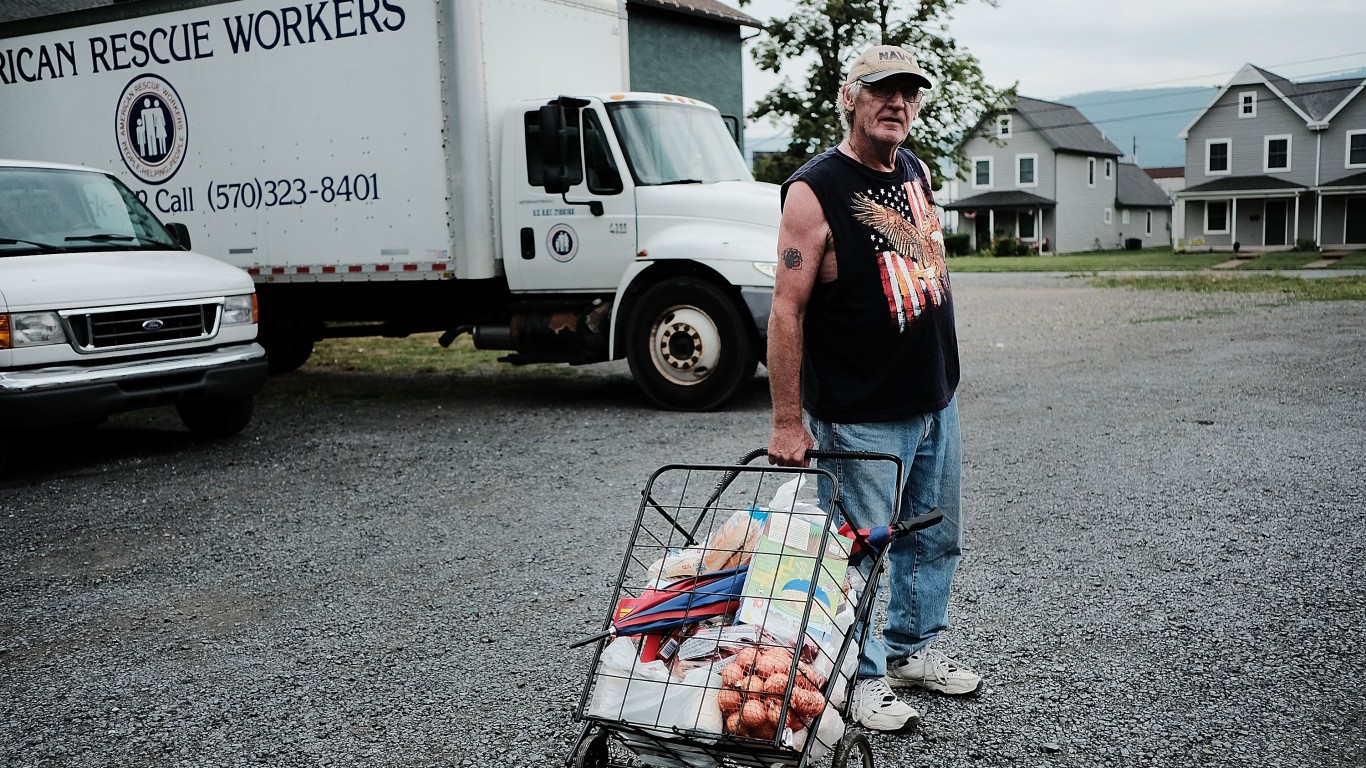
Published:
Last Updated:

Developed in 1963, the official poverty rate is based on pre-tax income thresholds related to the cost of a minimum food diet and the number of individuals who depend on that income. As federal welfare spending increased dramatically over the past 50 years, many critics point out that the official poverty rate may not provide the most accurate picture of how many Americans are struggling financially.
In 2011, the U.S. Census Bureau began to regularly publish the supplemental poverty measure, a measure of poverty that takes into account geographic variations in cost of living, expenses such as medical costs and taxes, and anti-poverty subsidies like food stamps and unemployment insurance. After adjusting for these measures, the U.S. poverty rate rises from 12.3% to 13.1% — an increase of 2.7 million people. In some states, the increase in the estimate of the prevalence of poverty is far greater.
To determine the states where poverty is worse than you think, 24/7 Wall St. ranked states by the percentage-point difference between the official poverty rate and supplemental poverty rate using data from the Census Bureau.
In an October 2019 report analyzing the effect of various anti-poverty subsidies, the Census Bureau determined that Social Security, refundable tax credits, the Supplemental Nutrition Assistance Program (SNAP), Supplemental Security Income, housing subsidies, child support payments, school lunch programs, Temporary Assistance for Needy Families (TANF), and unemployment insurance have the largest impact on the number of individuals considered to be living in poverty under the supplemental poverty measure. For more on unemployment insurance, see the best and worst states to be unemployed.
In the same report, researchers determined that medical expenses, work expenses, Federal Insurance Contributions Act (FICA) tax, and federal income tax are the biggest factors pushing Americans below the poverty line as measured by the supplemental poverty measure. For more on the supplemental poverty measure, see the states lifting the most children out of poverty.
Click here to see the 15 states where poverty is worse than you might think
Click here to read our methodology
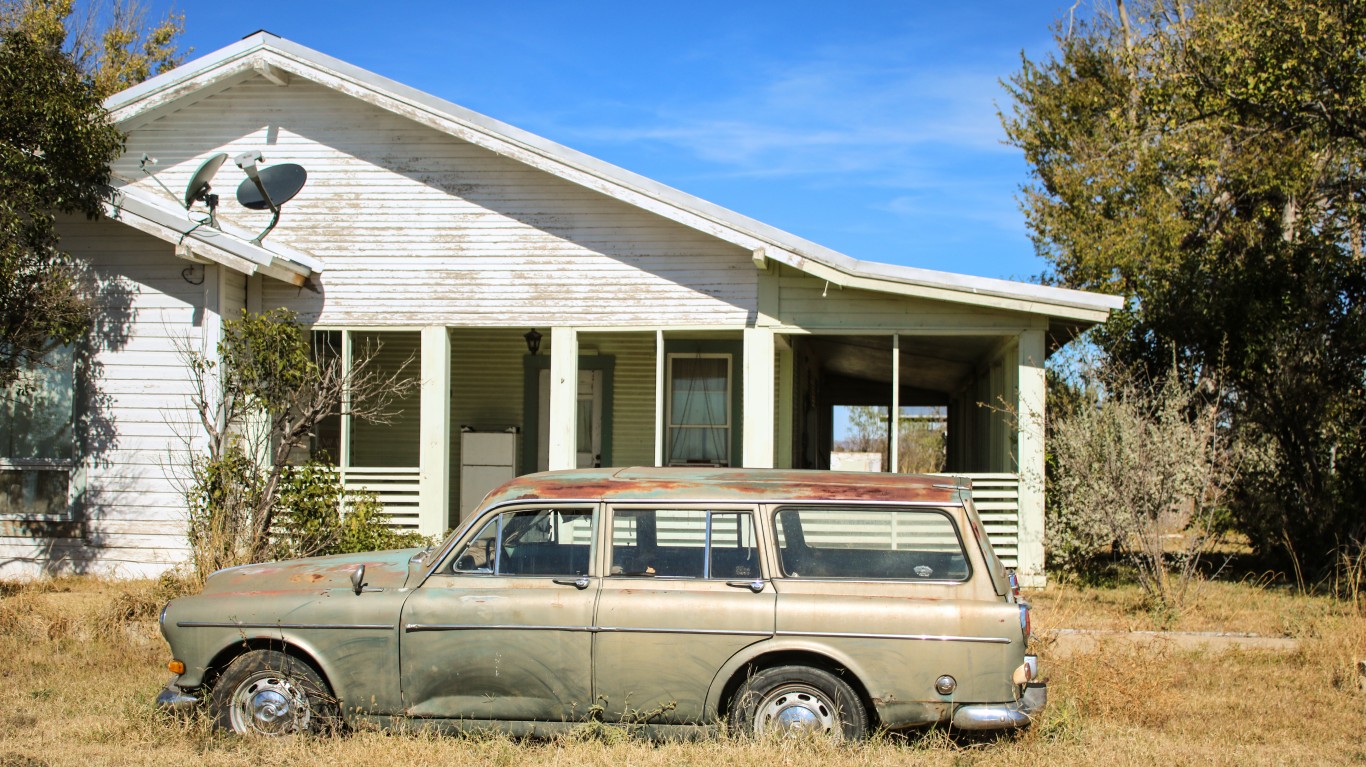
15. Texas
> Supplemental poverty rate: 14.2% (8th highest)
> Official poverty rate: 13.7% (13th highest)
> Cost of living: 3.0% less than national avg. (23rd highest)
> SNAP recipiency: 11.9% (18th highest)
> Median household income: $60,629 (24th highest)
According to the official poverty measure, 13.7% of the Texas population lives in households with incomes below the poverty line. After accounting for factors such as taxes, cost of living, medical costs, and other expenses included in the supplemental poverty measure (SPM), however, that percentage rises to 14.2% — the eighth highest SPM rate of any state.
One factor driving the higher SPM rate in Texas may be the burden of medical expenses incurred by the state’s large uninsured population. Uninsured Americans are often charged higher medical care rates than individuals with health insurance, and they have more difficulty paying their bills. In Texas, some 17.1% of residents do not have health insurance, the highest uninsured rate of any state.
[in-text-ad]
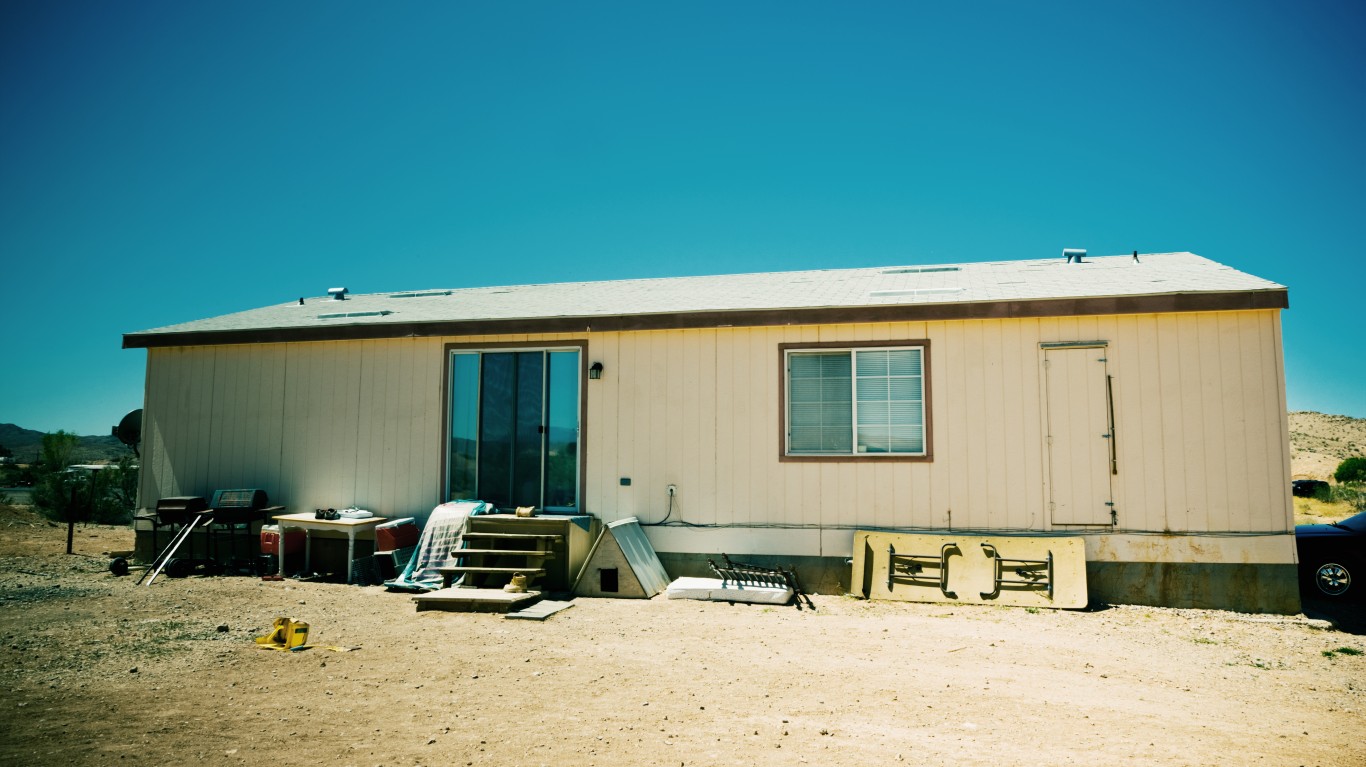
14. Nevada
> Supplemental poverty rate: 13.5% (14th highest)
> Official poverty rate: 12.2% (19th highest)
> Cost of living: 2.4% less than national avg. (21st highest)
> SNAP recipiency: 11.2% (25th highest)
> Median household income: $58,646 (22nd lowest)
Nevada is one of 15 states in which the poverty rate increases after accounting for taxes, medical costs, and other expenses, as well as anti-poverty subsidies such as SNAP, TANF, and unemployment insurance. After adjusting for these costs and subsidies, the poverty rate in Nevada rises from 12.2% — the 19th highest — to 13.5%, 14th highest.
One factor tied to the high rate of poverty in Nevada may be the low rate of homeownership in the state. Owning a home is one of the most effective ways for low-income families to build long-term wealth and avoid the cycle of poverty. In Nevada, just 56.8% of heads of households own their homes, the third lowest homeownership rate of any state.
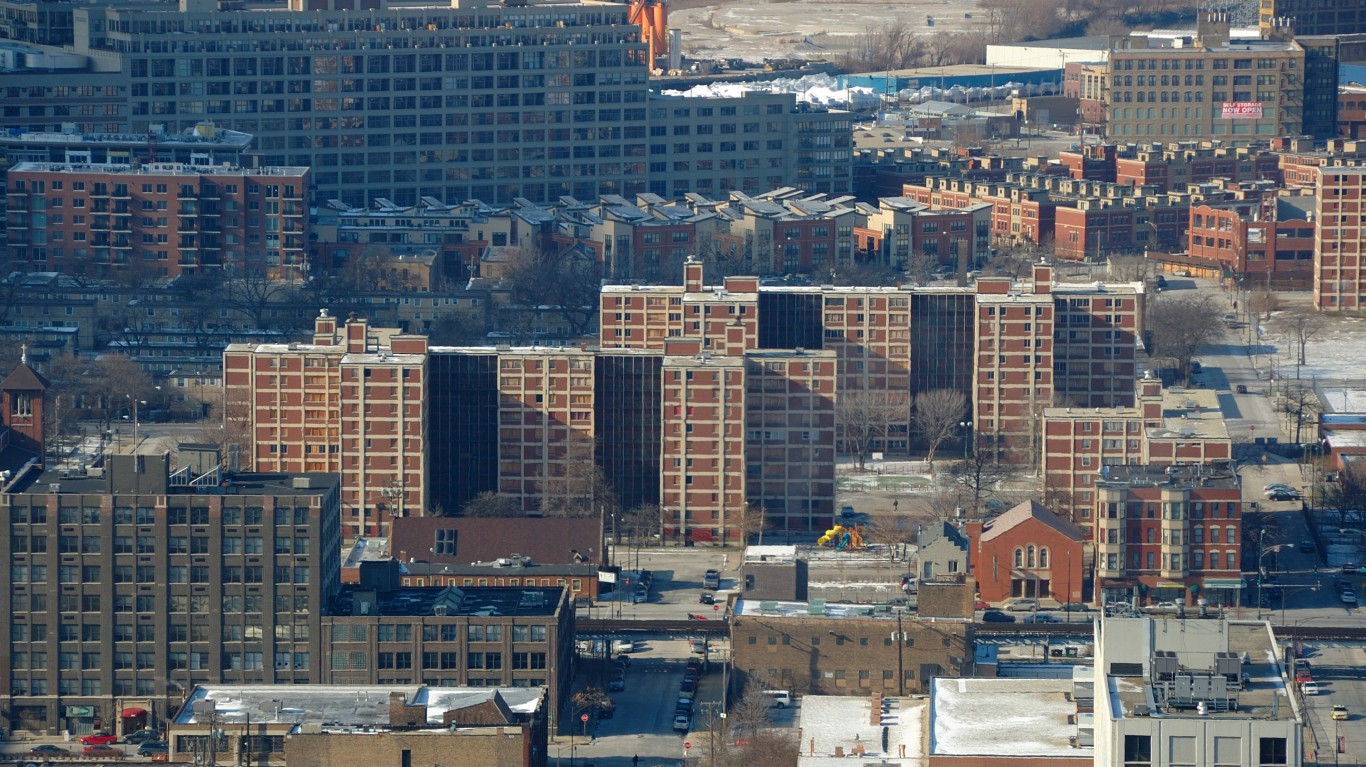
13. Illinois
> Supplemental poverty rate: 12.3% (22nd highest)
> Official poverty rate: 10.9% (23rd lowest)
> Cost of living: 1.5% less than national avg. (18th highest)
> SNAP recipiency: 12.3% (16th highest)
> Median household income: $65,030 (15th highest)
After adjusting for taxes, medical costs, cost of living, and other expenses, the percentage of individuals living below the poverty line in Illinois rises from 10.9% to 12.3%.
A Census Bureau study analyzing the effect of various anti-poverty subsidies determined that Social Security had the greatest effect on keeping people above the federal poverty line, as measured by the supplemental poverty measure. In Illinois, just 29.5% of households receive Social Security income, the 10th smallest share of any state.

12. Massachusetts
> Supplemental poverty rate: 11.4% (24th lowest)
> Official poverty rate: 9.8% (13th lowest)
> Cost of living: 7.9% more than national avg. (7th highest)
> SNAP recipiency: 11.5% (21st highest)
> Median household income: $79,835 (4th highest)
The typical home in Massachusetts is valued at $400,700, the third highest median home value of any state and $171,000 more than the U.S. figure. On average, goods and services cost 7.9 cents more on the dollar in Massachusetts than they do nationwide, the seventh highest cost of living of any state.
After adjusting for the high cost of living, as well as other expenses such as out-of-pocket medical costs and taxes and government aid programs and subsidies, the percentage of residents living in poverty in Massachusetts rises from 9.8% to 11.4% — an increase of 107,000 people.
[in-text-ad-2]
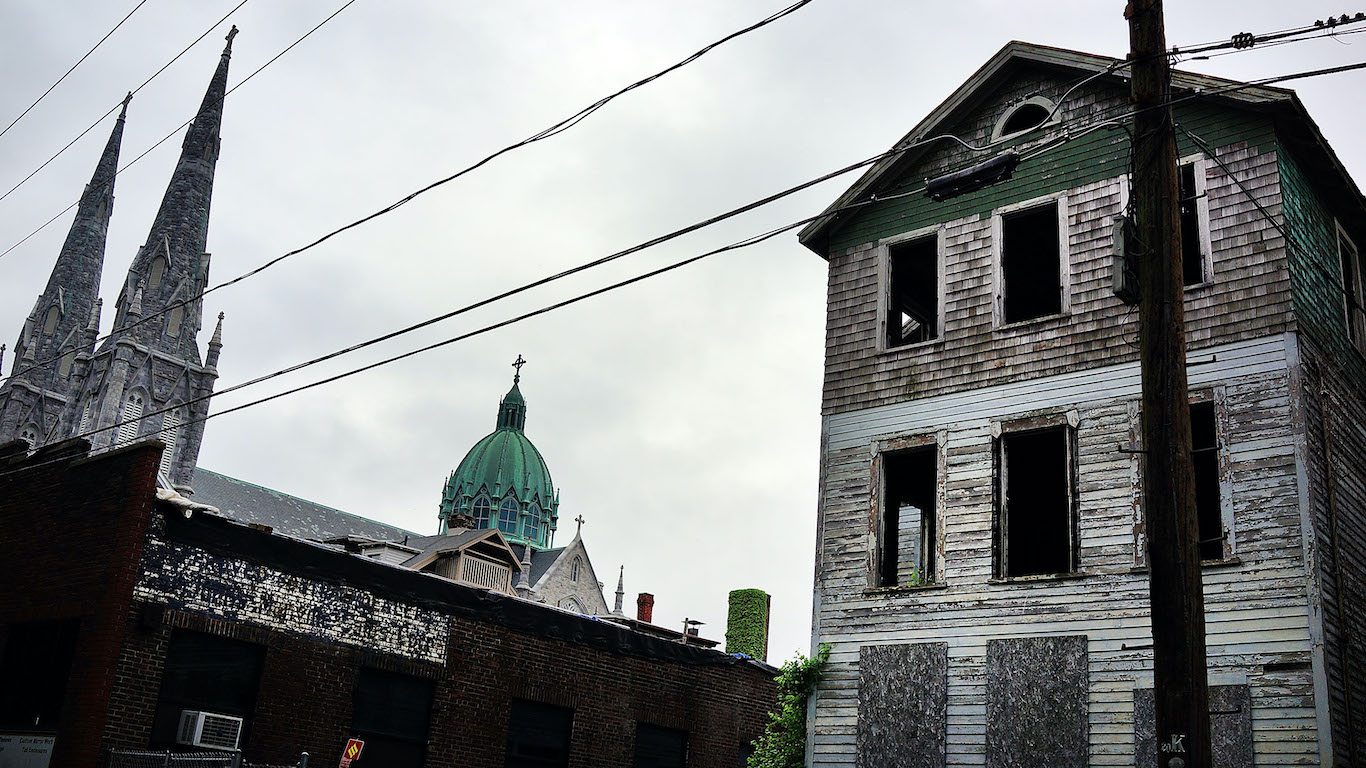
11. Connecticut
> Supplemental poverty rate: 11.6% (24th highest)
> Official poverty rate: 9.8% (13th lowest)
> Cost of living: 8.0% more than national avg. (6th highest)
> SNAP recipiency: 11.2% (25th highest)
> Median household income: $76,348 (5th highest)
After adjusting for expenses such as medical costs and taxes, as well as for anti-poverty subsidies like Social Security and SNAP, the poverty rate in Connecticut rises from 9.8% to 11.6% — an increase of 61,000 people.
Two factors driving the increase may be low benefits recipiency and high cost of living. While the federal Special Supplemental Nutrition Program for Women, Infants, and Children (WIC) program provides grant money to states for food, health care, and nutrition education, just 43.1% of eligible women and children in Connecticut receive WIC benefits, the sixth smallest share of any state. Additionally, goods and services cost 9.8% more in Connecticut than they do nationwide, the sixth highest cost of living of any state.
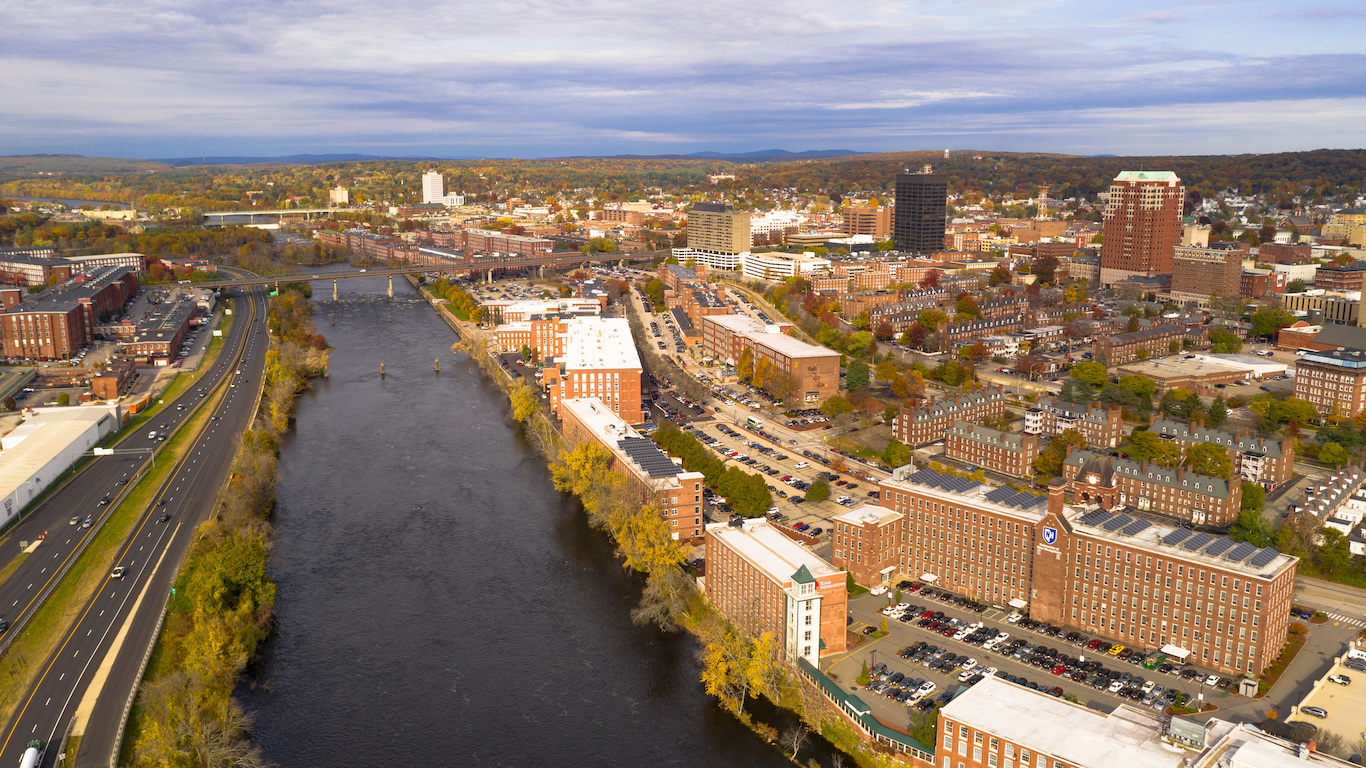
10. New Hampshire
> Supplemental poverty rate: 8.2% (6th lowest)
> Official poverty rate: 6.4% (the lowest)
> Cost of living: 5.8% more than national avg. (9th highest)
> SNAP recipiency: 6.7% (3rd lowest)
> Median household income: $74,991 (7th highest)
After adjusting for taxes, medical costs, cost of living, and other expenses included in the supplemental poverty measure, the percentage of individuals living below the poverty line in New Hampshire rises from 6.4% — the lowest in the country — to 8.2%, the sixth lowest.
The Census Bureau identified the Supplemental Nutrition Assistance Program (SNAP) as the third most impactful anti-poverty program after Social Security and refundable tax credits, as measured by the difference between the official poverty rate and supplemental poverty measure rate. In New Hampshire, just 75.0% of eligible individuals receive SNAP benefits, the 11th smallest share of any state. Also, the typical monthly benefit was just $101 per person in fiscal 2017, the smallest amount nationwide.
[in-text-ad]
9. Colorado
> Supplemental poverty rate: 10.8% (21st lowest)
> Official poverty rate: 8.9% (5th lowest)
> Cost of living: 3.2% more than national avg. (11th highest)
> SNAP recipiency: 7.2% (5th lowest)
> Median household income: $71,953 (11th highest)
After adjusting for expenses such as medical costs and taxes, as well as for anti-poverty subsidies like Social Security and SNAP, the poverty rate in Colorado rises from 8.9% to 10.9% — an increase of 107,000 people.
One factor contributing to the increase may be low WIC recipiency. The federal Special Supplemental Nutrition Program for Women, Infants, and Children (WIC) program provides grant money to states for food, health care, and nutrition education for low-income women and children and has a significant impact on the share of individuals living below the poverty line. Just 41.0% of eligible women and children in Colorado receive WIC benefits, the fourth smallest share of any state.

8. Virginia
> Supplemental poverty rate: 12.8% (17th highest)
> Official poverty rate: 10.7% (19th lowest)
> Cost of living: 2.1% more than national avg. (13th highest)
> SNAP recipiency: 7.9% (8th lowest)
> Median household income: $72,577 (10th highest)
After adjusting for medical expenses, work expenses, taxes, and other factors included in the supplemental poverty measure, the percentage of Virginia residents considered living below the poverty line rises from 10.7% to 12.8% — an increase of 177,000 people.
One factor accounting for the large spike may be the low SNAP recipiency rate in the state. An October 2019 Census Bureau study determined that SNAP had the third greatest effect of any federal anti-poverty subsidy on keeping individuals above the federal poverty line, as measured by the supplemental poverty measure. In Virginia, just 75.0% of eligible individuals receive SNAP benefits, the 11th smallest share of any state.
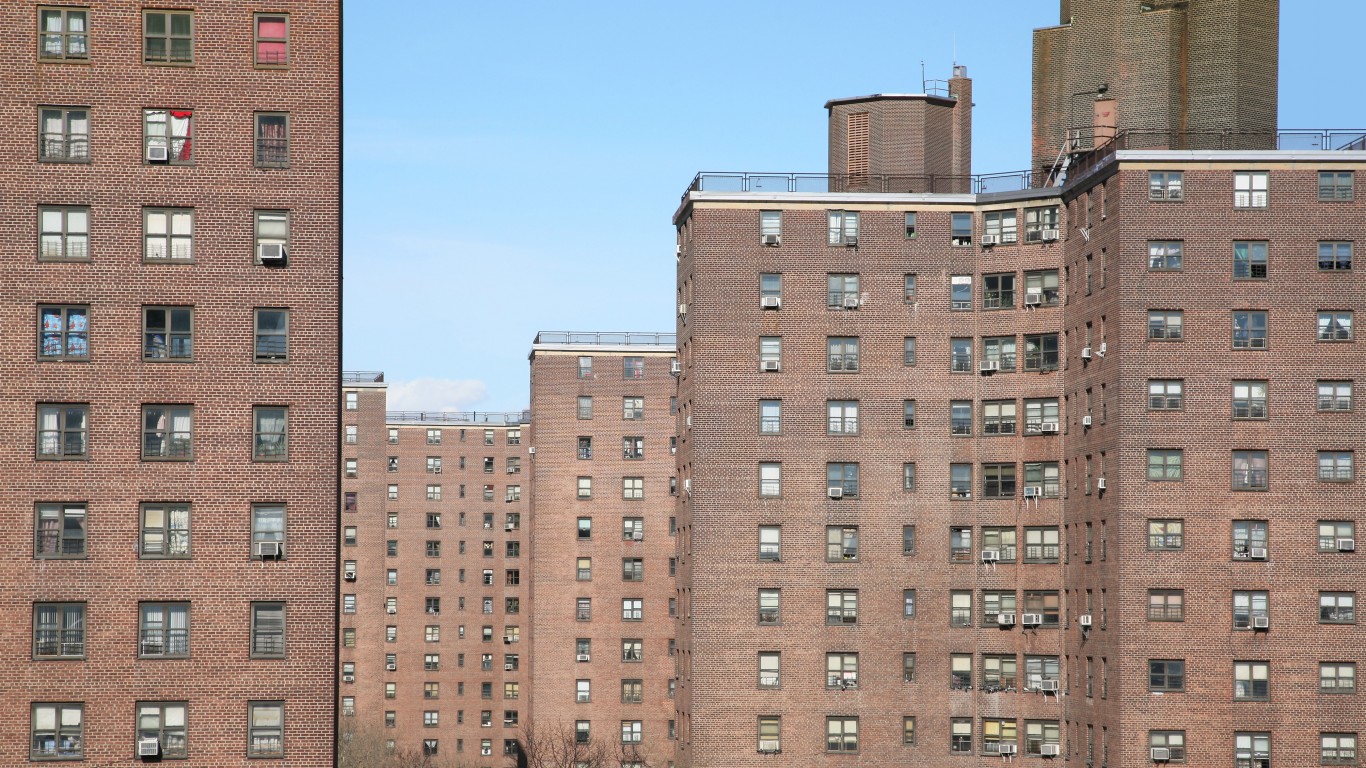
7. New York
> Supplemental poverty rate: 14.0% (9th highest)
> Official poverty rate: 11.8% (23rd highest)
> Cost of living: 15.8% more than national avg. (2nd highest)
> SNAP recipiency: 14.6% (7th highest)
> Median household income: $67,844 (14th highest)
Under the official rate, 11.8% of New York residents are considered to be living below the poverty line, less than the 12.3% national poverty rate. After adjusting for medical costs, taxes, and other expenses, however, the percentage rises to 13.7% — more than the 13.1% national supplemental poverty measure rate.
High rents in New York City — where over 40% of the population of New York state lives — are likely one factor driving the high SPM rate. The typical home in New York state costs $325,500, the eighth highest median home value of any state. Overall, goods and services cost 15.8% more in the state than they do nationwide, the second highest cost of living in the country.
[in-text-ad-2]

6. Delaware
> Supplemental poverty rate: 11.9% (23rd highest)
> Official poverty rate: 9.6% (11th lowest)
> Cost of living: 0.1% more than national avg. (14th highest)
> SNAP recipiency: 11.3% (24th highest)
> Median household income: $64,805 (16th highest)
Under the official measure, 9.6% of Delaware residents are considered to be living below the poverty line, the 11th smallest share of any state. After adjusting for expenses such as medical costs and taxes, as well as anti-poverty subsidies like Social Security and SNAP, the percentage increases to 11.9% — the 23rd highest SPM rate of any state.
An October 2019 Census Bureau report analyzing the effects of various federal subsidies on poverty determined that unemployment insurance has a significant impact on the number of people considered to be living below the poverty line. In Delaware, however, the average weekly unemployment insurance benefit is just $266.76, approximately $100 less than the national average.

5. Florida
> Supplemental poverty rate: 16.2% (3rd highest)
> Official poverty rate: 13.6% (14th highest)
> Cost of living: 0.1% less than national avg. (15th highest)
> SNAP recipiency: 13.8% (8th highest)
> Median household income: $55,462 (14th lowest)
According to the official poverty measure, 13.6% of Florida residents live in households with income below the poverty threshold. After accounting for factors like taxes, cost of living, and other expenses included in the supplemental poverty measure, however, the percentage of residents living in poverty rises to 16.2% — the third highest SPM rate of any state.
One expense contributing to the high SPM rate in Florida may be the medical costs incurred by the state’s large uninsured population. Uninsured Americans are often subject to higher medical care rates than individuals with health insurance, and it is more difficult for them to pay their bills. In Florida, some 13.0% of residents do not have health insurance, the fourth highest uninsured rate of any state.
[in-text-ad]
4. Hawaii
> Supplemental poverty rate: 13.7% (13th highest)
> Official poverty rate: 9.5% (9th lowest)
> Cost of living: 18.5% more than national avg. (the highest)
> SNAP recipiency: 10.0% (19th lowest)
> Median household income: $80,212 (3rd highest)
Under the official rate, 9.5% of Hawaii residents are considered to be living below the poverty line, less than the 12.3% national poverty rate. After adjusting for medical costs, taxes, and other expenses, however, the percentage rises to 13.7% — more than the 13.1% national supplemental poverty measure rate.
The SPM takes into account geographic variations in housing costs to better understand how many individuals are struggling financially in a given area. Hawaii has the most expensive housing in the country, with the typical home valued at $631,700 — nearly three times the U.S. median home value of $229,700. Goods and services cost 18.5% more in Hawaii than they do nationwide, the highest cost of living of any state.

3. New Jersey
> Supplemental poverty rate: 14.0% (9th highest)
> Official poverty rate: 9.1% (6th lowest)
> Cost of living: 12.9% more than national avg. (4th highest)
> SNAP recipiency: 8.2% (10th lowest)
> Median household income: $81,740 (2nd highest)
After adjusting for medical costs, work expenses, taxes, and other factors included in the supplemental poverty measure, the percentage of New Jersey residents considered living below the poverty line rises from 9.1% — the sixth lowest poverty rate of any state — to 14.0%, the ninth highest supplemental poverty rate.
One factor accounting for the large spike may be the high cost of living in New Jersey. Goods and services cost 12.9% more in New Jersey than they do nationwide, the fourth highest markup of any state. Despite the high cost of living, the average SNAP benefit payout is just $114 per household member per month, the ninth lowest amount. Just 74.0% of eligible individuals receive SNAP, also the ninth smallest such figure.
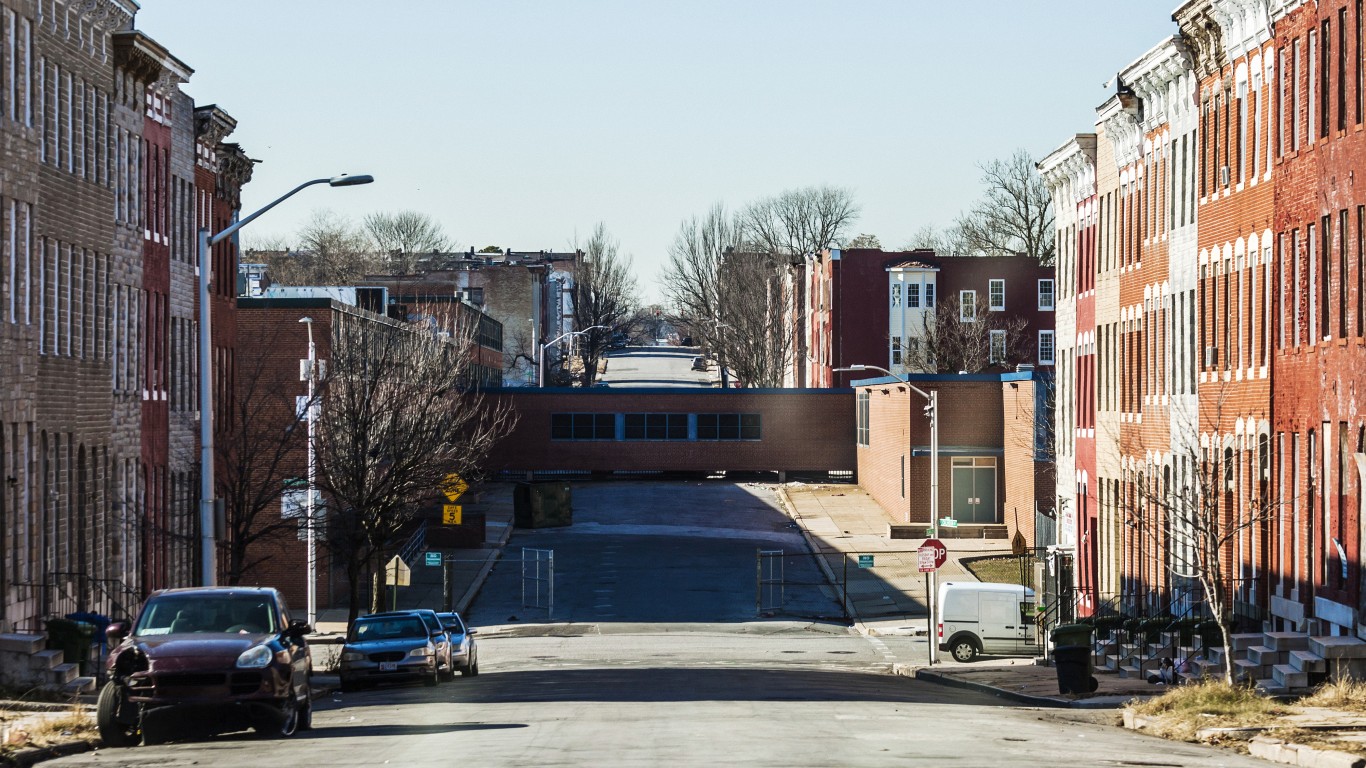
2. Maryland
> Supplemental poverty rate: 12.4% (21st highest)
> Official poverty rate: 7.2% (2nd lowest)
> Cost of living: 9.4% more than national avg. (5th highest)
> SNAP recipiency: 9.4% (16th lowest)
> Median household income: $83,242 (the highest)
The typical home in Maryland is worth $324,800, the ninth highest median home value of any state and nearly $100,000 more than the U.S. figure. On average, goods and services cost 9.4% more in Maryland than they do nationwide, the fifth highest cost of living of any state.
After adjusting for the high cost of living, as well as other expenses such as out-of-pocket medical costs and taxes, the share of residents living in poverty in Maryland increases from 7.2% — the second smallest share of any state — to 12.4%, the 21st largest share.
[in-text-ad-2]

1. California
> Supplemental poverty rate: 18.1% (the highest)
> Official poverty rate: 12.5% (18th highest)
> Cost of living: 14.8% more than national avg. (3rd highest)
> SNAP recipiency: 8.5% (12th lowest)
> Median household income: $75,277 (6th highest)
Under the official rate, 12.5% of California residents are considered to be living below the poverty line, roughly in line with the 12.3% national poverty rate. After adjusting for medical costs, taxes, and other expenses as well as government aid programs and subsidies, however, the percentage rises to 18.1% — the highest supplemental poverty measure rate of any state and the highest gap between the two measures.
A Census Bureau study analyzing the impact of various anti-poverty subsidies determined that Social Security and SNAP have the largest and third largest effect of any program on keeping individuals above the federal poverty line. In California, however, just 27.9% of eligible households receive Social Security benefits, the sixth smallest share of any state. Similarly, just 70.0% of eligible individuals receive SNAP benefits, also the sixth smallest share.
Methodology
To determine the states where poverty is worse than you think, 24/7 Wall St. ranked states based on the percentage-point difference between the official poverty rate and supplemental poverty rate with data from the U.S. Census Bureau. Data on the number and percentage of people living below the poverty line according to each measure are three-year averages for 2016 to 2018. Data on the percentage of households receiving SNAP (food stamps) benefits and median household income came from the Census Bureau’s American Community Survey and are for 2018. Data on regional price parity, or cost of living, came from the Bureau of Economic Analysis and are for 2017.
Data on the average weekly benefit amount for unemployment insurance came from the U.S. Department of Labor and are for the 12 months ending Q2 2019. Data on the share of eligible individuals who participated in SNAP in 2015 is from the Center on Budget and Policy Priorities. Data on the average monthly SNAP benefit per each household member in fiscal 2017 is also from the CBPP. Data on the percentage of eligible individuals who received Special Supplemental Nutrition Program for Women, Infants and Children (WIC) benefits in 2014 comes from the U.S. Department of Agriculture. All data are for the most recent period available.
The average American spends $17,274 on debit cards a year, and it’s a HUGE mistake. First, debit cards don’t have the same fraud protections as credit cards. Once your money is gone, it’s gone. But more importantly you can actually get something back from this spending every time you swipe.
Issuers are handing out wild bonuses right now. With some you can earn up to 5% back on every purchase. That’s like getting a 5% discount on everything you buy!
Our top pick is kind of hard to imagine. Not only does it pay up to 5% back, it also includes a $200 cash back reward in the first six months, a 0% intro APR, and…. $0 annual fee. It’s quite literally free money for any one that uses a card regularly. Click here to learn more!
Flywheel Publishing has partnered with CardRatings to provide coverage of credit card products. Flywheel Publishing and CardRatings may receive a commission from card issuers.
Thank you for reading! Have some feedback for us?
Contact the 24/7 Wall St. editorial team.